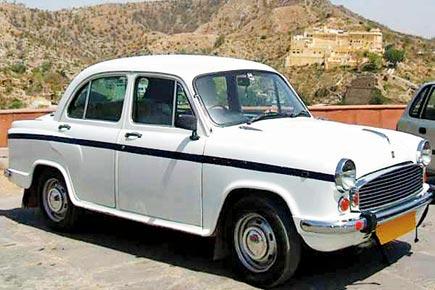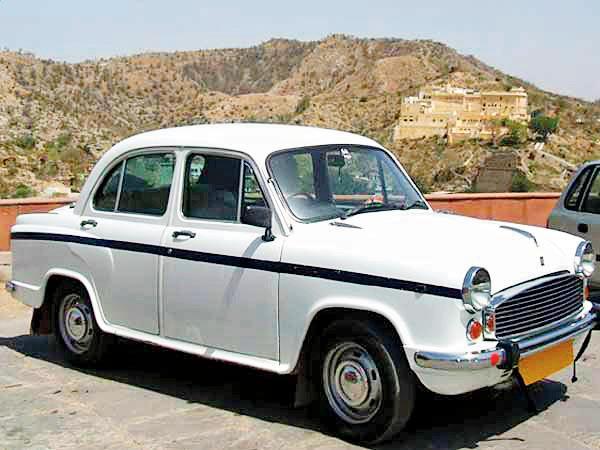Oozing with fond memories, most of us have had our own rendezvous with the burly beauty called the Ambassador


ADVERTISEMENT
 Sir Mark Tully, the renowned British journalist called it a “bowler hat on wheels.” The iconic Ambassador was recently sold to French auto giant Peugeot, and with that one stroke, it spelt the end of an era. Such that one could almost hear the sighs all the way from the golf-playing uncles at Tolly Club to the taxiwallahs on Shakespeare Sarani in the City of Joy.
Sir Mark Tully, the renowned British journalist called it a “bowler hat on wheels.” The iconic Ambassador was recently sold to French auto giant Peugeot, and with that one stroke, it spelt the end of an era. Such that one could almost hear the sighs all the way from the golf-playing uncles at Tolly Club to the taxiwallahs on Shakespeare Sarani in the City of Joy.
Back home, Bombaywallahs too will remember this automobile fondly – especially in its kaali-peeli avatar. The sight of a Sardarjee-driven Amby stuffed to the gills with a family of tourists around Gateway of India is a sight many city folk, yours truly included, would easily recall if a slideshow of pre-liberalisation India were to be made. It was looked upon as a symbol of safari suited babus and lal battis, and of mantris in their starched kurtas and Gandhi topis. For its middle-class owners, it occupied a place of pride. Those who owned it in the 1990s – after Maruti and international auto giants took over the Indian market – continued to show off this vintage (burly) beauty with pomp. Millenials would be surprised to learn that up until the 1980s (since the 1960s) this model was India’s only mass produced luxury car.
While few were spotted in the city as it entered the Millennium, we were lucky to experience this heritage on wheels well into the 2000s, during multiple visits to Calcutta (sorry, no Kolkata for us). Painted in bright yellow, these taxis were a lifeline for out-of-towners. Mostly driven by Biharis, it was also a godsend because they were familiar with Hindi. The spacious interiors were a welcome departure from their space-starved cousins, the Premier Padminis back home.
These larger-than-life carriers grew into a fixation during our visits despite its amusing oddities. Sometimes, the handbrakes wouldn’t work; on other occasions, the glass windows would refuse to roll up, after a tiring workout for our wrists. Stories about its accelerator would make for amusing tales over sugary chai. This one time, during an early introduction to the wonder vehicle, I was treated to the marvels of its suspension. I had hailed a cab from Park Street to Ballygunge. “Didi, darwaza ko andar se pakad lo,” my cabbie advised, much to my surprise. Following his instructions to a T, I held on precariously as he negotiated seriously bumpy roads (courtesy the tram rails). The sight resembled one of a sailor negotiating his sails on choppy waters. At the end of the 20-minute ride, I had bitten my tongue a few times and had lost sense of my lower back. The mellifluous strains of Manna De from the Murphy car radio soothed somewhat on that balmy day in June. “Sab teekh-taakh hai, na?” enquired the cabbie while returning our change.
While there is no word as yet if the French giant will revive this model, we dearly hope that its nostalgia is safeguarded in one of the country’s automobile museums. A true ambassador of India, this.
mid-day’s Features Editor Fiona Fernandez relishes the city’s sights, sounds, smells and stones...wherever the ink and the inclination takes her. She tweets @bombayana. Send your feedback to mailbag@mid-day.com
 Subscribe today by clicking the link and stay updated with the latest news!" Click here!
Subscribe today by clicking the link and stay updated with the latest news!" Click here!






